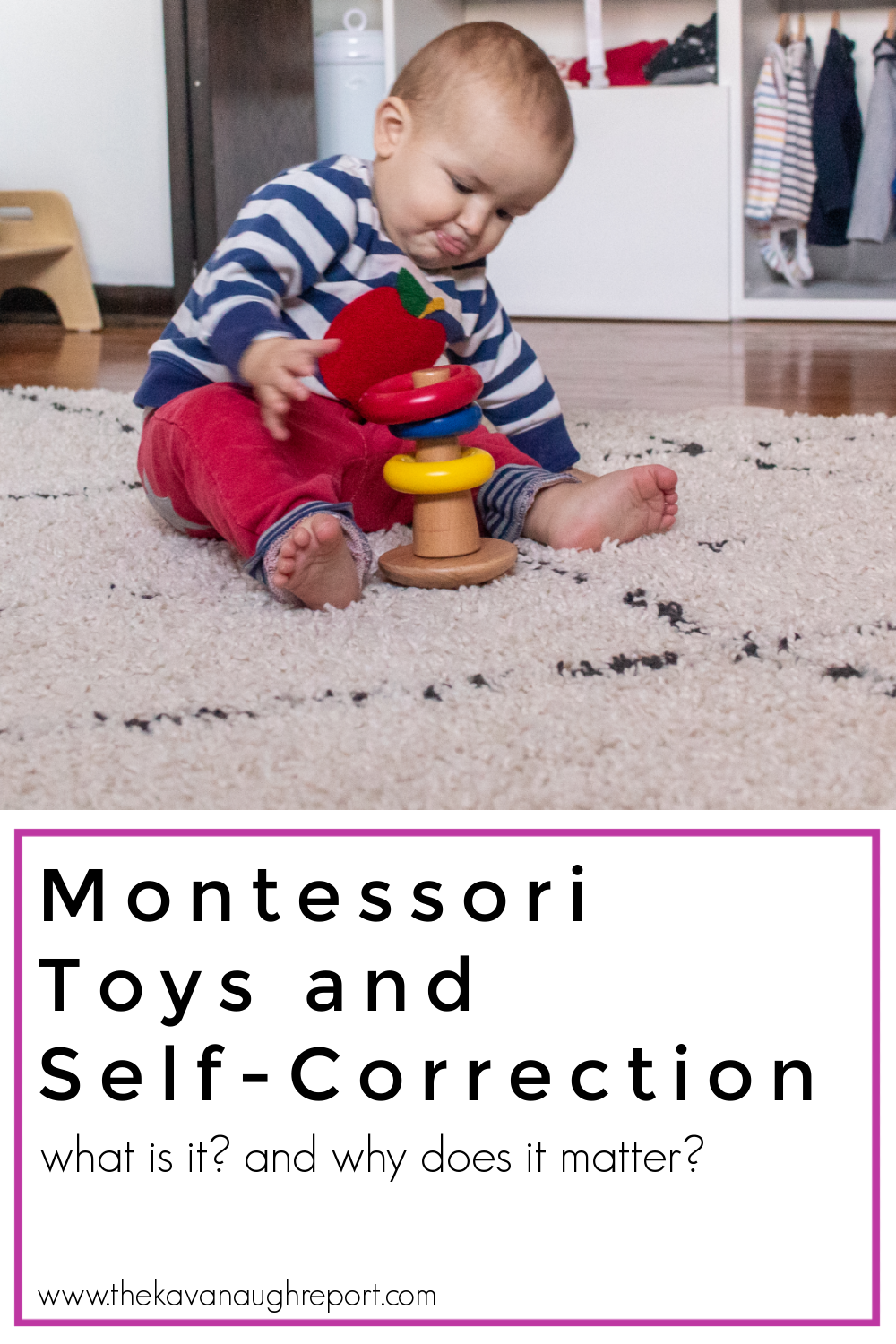There are many different things to look for when selecting toys for your Montessori home. We want to make sure toys fit the interests of our children, and meet their developmental needs. We often want simple toys made from natural materials. So many toys fit these qualities. However, one really important quality to consider is whether or not the material is self-correcting.
Here is some more information about self-correction, control of error, and why it's so important, and some examples to consider!
What does it mean for a toy to be self-correcting?
A self-correcting toy is one that will give a child some immediate feedback about whether or not the material is being done correctly. In other words, something about the design of the material tells the child if they have done the work correctly or not. Adult interaction is not needed for a child to determine if they completed work correctly. A child can immediately see whether something is "right" or "wrong." In contrast, toys that are non self-correcting do not have this built in control of error. They may have multiple ways to be completed, or the "correct" way is not easily identifiable.
Why Is Self-Correction Important?
Self-correcting materials are important for a variety of reasons. One, they allow for more independence for children. An adult does not have to constantly interrupt a child's work to explain or ensure that the work is being done properly. A child can use their own senses and see for themselves. Their flow remains intact and they can continue to deeply concentrate without interruption. The materials become the true teachers and adults can observe and guide, instead of correct.
Two, help to refine the senses. Because the feedback in self-correcting materials often comes from the senses, children get to flex those muscles as they play. They need to use their ears, eyes, sense of touch, etc. to complete the material they are working with.
Finally, self-correcting materials foster self-confidence and intrinsic problem solving skills. Instead of feeling judged and interrupted by an adult "correcting" their work, self-correcting materials reveal the problem to the child as the child explores. So kids are able to fix the problems all on their own. Their internal dialogue becomes "I can do it!" instead of "let me get my mom." Instead of feeling criticized and judged, a child can feel confident to take risks and use new and different materials because they are not afraid of making mistakes.
Some Examples
There are lots of ways that materials can be self correcting. This could include physical design - like the self-correcting stacker Teddy is using in many of these pictures. The stacker has a graduated base and rings so that they will only correctly fit if placed in the right order. If Teddy tries to place the blue ring first, the yellow and red will not slide into their positions.
This is in contrast to many common ring stackers where the rings can fit on the base in any order. While the rings are often different sizes and have a "correct" order. That order is often beyond the abilities of a young toddler because it requires a much more refined ability to visual and tactically distinguish between the pieces. The feedback is too abstract making the material more suited for an older child who can internalize the order without the physical feedback. Simply put, while it may be self correcting for an older child, it isn't for the toddlers who often are given the material.
This post contains affiliate links at no cost to you.
Other times toys are made self correcting by including a color matching component. This can be seen with the push ball box that Teddy is using here. The balls match the colors of the rings on each of the holes. While the balls will fit into any of the holes, over time, a child can come to see that the blue ball is for the blue hole. If the colors were random, or missing, this piece of self-correction wouldn't be present in the material.
As kids get older the method used for self-correcting can get more abstract. For preschoolers, it might be that they need to flip card material over to see if two stickers match. For even older children, an answer key might be provided. But, even into the elementary years, the self-correcting quality remains important. As parents we always want to think about how materials are self correcting or how we can tweak something to make it self correcting.
Just one quick note about open ended toys. There are toys that are open-ended that have no set way to use them (blocks for example.) These also have a place in a Montessori home, but we don't want to have all materials that don't include some element of self-correction.
Toys featured in this post: self-correcting ring stacker (these are hard to find in stock - similar, and plastic version), regular ring stacker (ours isn't made anymore so linked a similar, more simple design) push box
How many of your materials/toys are self-correcting?










